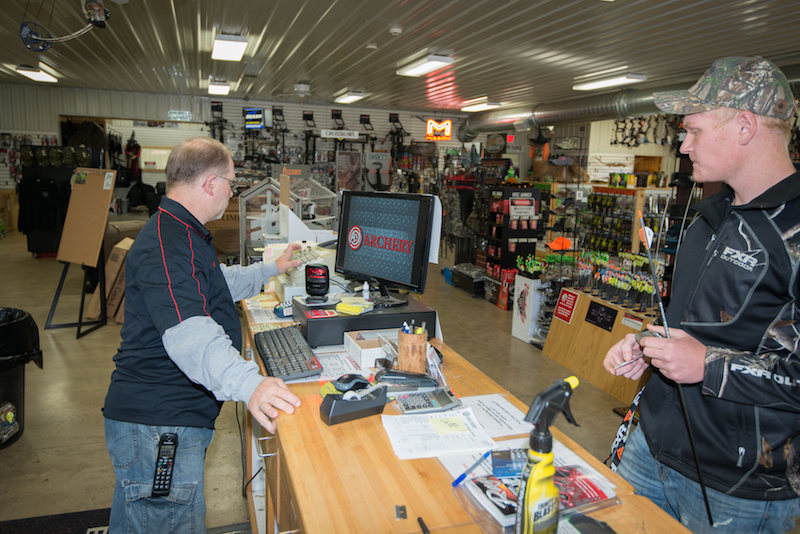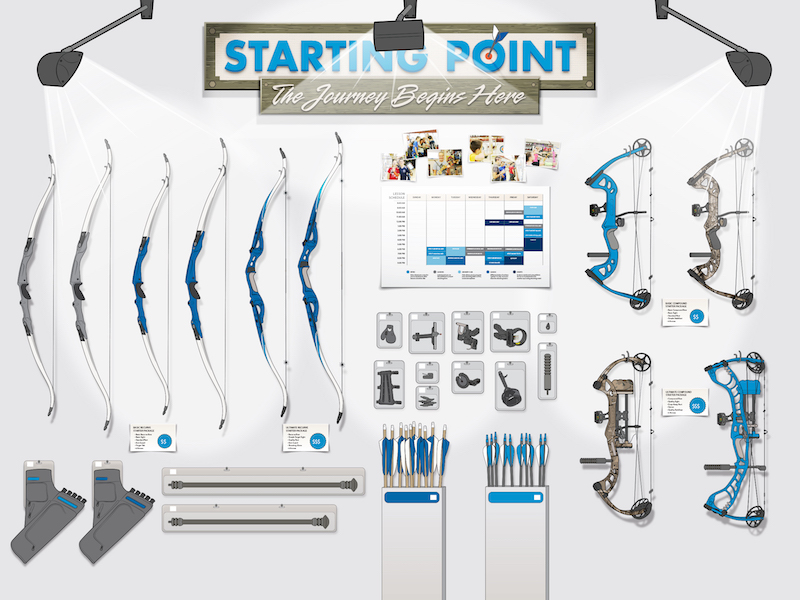Business
Learn these 4 Inventory-Management Lessons Now
Save your business from costly mistakes.
Photo Credit: ATA
All businesses require good inventory management to grow. But it’s never easy. The lessons that follow help you walk the line between having enough inventory to meet customer demand, but not so much that you must one day sell it without making a profit.

Having a well-functioning point of sale system is a step toward bettering your business. Photo credit: ATA
How many times did you turn your inventory last year? Which products generated the most profit? You’ll learn the answers quickly if you keep good records. Manual systems like Excel spreadsheets or pen and paper are better than nothing, but they take time and they’re prone to human errors. In contrast, automated inventory-management systems help business owners save time and money.
Randy Phillips, vice chair of the ATA’s Retail Council and owner of Archery Headquarters Inc. in Arizona, said retailers should invest in a computerized system to ensure their business grows.
“If you want to sell $100,000 a year, there’s no way you can memorize what you need to buy and when you need to buy it,” Phillips said. “At that point, you’ve grown outside your bandwidth.”
Inventory-tracking systems also help business owners reduce theft, improve customer service, manage their money, and effortlessly track products.
Miles Hall, senior adviser for the consulting company Hall-N-Hall, said computer technology today is much better and far cheaper. “You can get a great point-of-sales system and its hardware, and put it in the cloud for around $10,000,” Hall said. “In the old days, you had to spend $50-to-$60,000 to do it. It’s a great investment.”
Hall also recommends hiring someone with inventory-management experience if you don’t feel confident or comfortable handling inventory. “Bring in someone who’s talented at a certain niche,” he said. “Have someone whose job is to handle – not sell – inventory, and they’ll pay for themselves over and over again.”
Log in to your ATA-member account to learn which ATA service providers offer affordable point-of-sales systems like ePRO or Celerant Technology.
Retailers must stock products that make money. Some folks assume they’re making money, but learn they’re in red at year’s end. If so, make sure you understand terms like “margin” and “markup.” Hall assures business owners they’re not the same thing.
“Salesmen for companies use the ‘markup’ term, but ‘margin’ is the world we live in,” Hall said. “Businesses need to understand these numbers make a big difference on their bottom line.”
The “markup percentage” is the percentage difference between a product’s actual cost and its selling price. Meanwhile, “gross margin percentage” is the percentage difference between a product’s selling price and its profit. In short, margin is calculated off the selling price, not the product cost. Therefore, retailers should use margin, not markup, to learn how much they’ll profit.
For example, Hall said a 30 percent “markup” on a $100 product creates a final selling price at $130. However, a 30 percent “margin” on a $100 product sets a final selling price of $142.86. That means a business operating on “margins” makes $12.86 more than one operating on “markups,” which means a 30 percent “margin” is actually a 43 percent “markup.”
Although both terms help businesses calculate price, they reflect profit differently. Knowing that difference helps you communicate with your business partners to ensure the profits you want. If you need help with math, several apps and websites can help you calculate margin/markup totals.

What you sold, or didn't sell, last year should dictate your sales for this year. Photo credit: ATA
Once your inventory-management system is in place, you should generate weekly, monthly or quarterly sales reports, depending on your business’ size. Then, study the reports to help make business decisions.
“Your memory might tell you you’re selling a lot of one product, but your sales report might tell you something different,” Phillips said.
Sales data verify or identify your best- or worst-selling products, as well as products that aren’t making money. Adapt your orders as necessary, but order strategically. Phillips said buying “the right amount at the right time” reduces freight costs through fewer shipments. He also warns that you can’t make money on out-of-stock products. Good plans don’t let pegs run empty.
Also, stock quality products that generate good margins. Those products will help you make money. Hall said business owners should forget about inventory they want. Instead, concentrate on items customers will likely buy. It’s important to focus on products that make money while meeting your customers’ needs.

WE ARE HERE TO HELP THE INDUSTRY, TO HELP INDIVIDUAL BUSINESSES GET THE MOST OUT OF THE INDUSTRY, AND TO HELP YOU.

This is an example of a layout that may help you sell more inventory. Photo Credit: ATA
Inventory management is tied to merchandising, which includes everything you do to promote and sell your products. To sell more products, make sure they’re visible, easily accessible and clearly marked.
Phillips segments his shop by archery categories to help sell products and better understand his customers. His eye-catching displays engage shoppers, make shopping easier, and encourage add-on purchases.
“[Segmenting our shop] helps us in a few ways,” Phillips said. “One, it tells us who the customer is, and lets us know how to start a conversation. And two, everyone wants to feel like they belong. So, presenting options gives them a chance to find a space they’re comfortable in.”
Phillips, for example, fills a wall with bow packages, and calls it the “beginner” section because newcomers are usually unsure what to buy. Buying grouped products is easier for them.
“If someone is standing in this area, we have a broad conversation about archery with them,” Phillips said. “We also know they might be a good candidate for our beginner classes so they can learn more about archery equipment and make a better buy.”
Consider that strategy for your store to better merchandise your inventory and encourage customers to buy. Create segments for youths, women, bowhunting, bowfishing and recreational archery. Let customers settle into a segment, and then approach them with a smile and open the conversation.
You can also create a product section for customers who take lessons or participate in your programs. People tend to buy gear they’re familiar with, so Phillips suggests using midrange equipment in your classes. The section can also have “next-step” equipment for those seeking upgrades.
Apply these lessons to your shop’s inventory-management strategy to maximize profits on all your products.
Contact Kurt Smith at (717) 578-0736, or kurtsmith@archerytrade.org, for more information about ATA-member service providers or inventory-management best practices.
